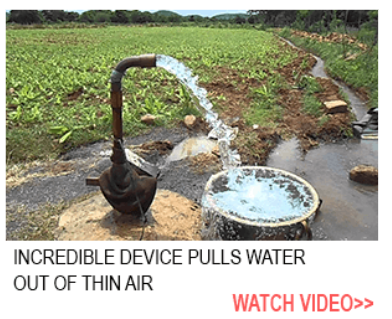Is the Water Freedom System a solution ?
Water scarcity is an urgent environmental problem. And, it threatens the livelihoods of millions of people around the world. This is mainly due to a rapidly growing world population, increasing industrialization and urbanization, climate change and overconsumption of water.
A sustainable solution
As a result, there has been an urgent need for sustainable solutions to combat water scarcity. And the Water Freedom System is one such solution. This system turns moist air into clean, drinkable water. So, it makes it a valuable tool in the fight against water scarcity.

The Water Freedom system is an instructive guide to simply and inexpensively building an energy-efficient device. Thus, its goal is to extract humidity from the ambient air and convert it into pure drinking water. The system consists of a small condensing unit, a series of filters and a storage tank.
Therefore, it works by first drawing in moist air using a fan and collecting it in the condensing unit. Then, the condenser cools the moist air by turning it into water droplets. And, these are then filtered to remove impurities and pollutants. The filtered water is finally stored in a tank, ensuring you always have a supply of clean drinking water on hand.
So, the system can produce up to 60 gallons of pure drinking water per day.
It is designed to be portable and can be easily installed in any location with humid air. This makes it an ideal solution for areas with limited access to potable water, such as rural or remote communities, disaster areas and developing countries.

Advantages of the Water Freedom System and limits
One of the main benefits of the Water Freedom System is that it provides a reliable and sustainable source of drinking water. It reduces dependence on traditional water sources and therefore minimizes the negative environmental impact of over-consumption of limited resources, such as groundwater. Plus, it drastically reduces the cost of purchasing bottled water, making it affordable for people of all income brackets.
Additionally, the Water Freedom System is ideal for emergency situations, such as natural disasters, where access to safe drinking water can be a matter of life and death.
Despite the many benefits of the Water Freedom System, there are some potential downsides that should be considered. For example, the system is highly dependent on ambient humidity levels and temperature. This means that it may not be an effective solution in arid or extremely dry climates. Additionally, the system requires a stable power supply to operate, which can be a challenge in areas with limited access to electricity.

In conclusion, the Water Freedom System offers a promising solution to the problem of water scarcity and sets a precedent for the adoption of sustainable water solutions. By investing in this system and implementing other sustainable water practices, we can reduce dependence on limited resources and ensure that everyone has access to safe drinking water.

